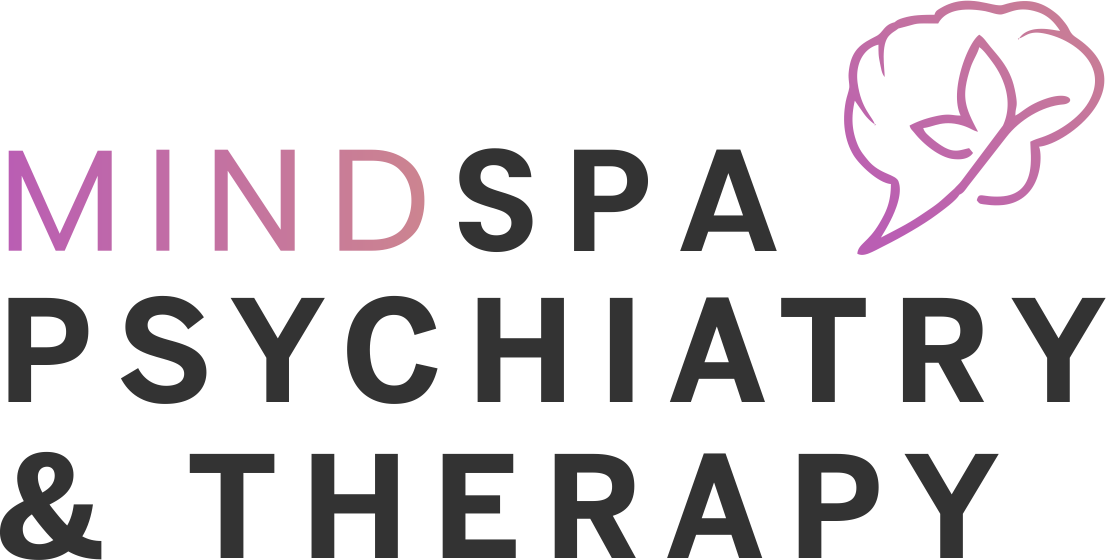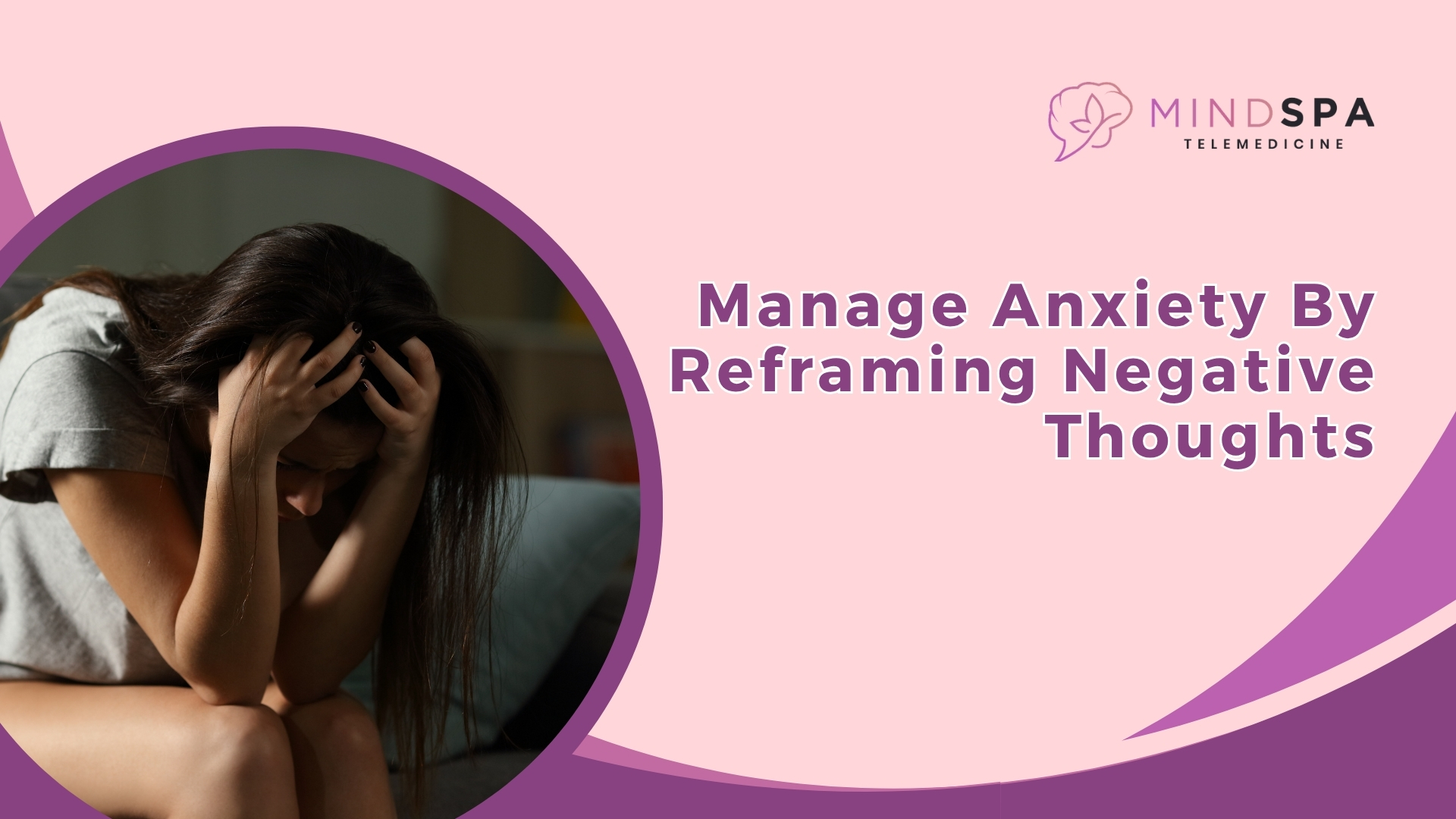Anxiety usually starts because of one negative thought and not necessarily physical symptoms. Such worries as I will fall short, something awful will occur, can develop into complete panic.
These ideas can seem to be true, but they are not always founded on reality. Reframing will allow you to dispute them and override with more balanced and healthy thoughts, getting you back in control of your mind.
What is Reframing?
Reframing can be described as an approach to therapy that challenges and shifts negative patterns of thinking. You do not take the worrying thoughts automatically, and instead, you stop and reconsider them. Your attitude changes.
For example:
- Instead of “I’m not good at anything,” you say, “I’m struggling right now, but I’ve succeeded before.”
- Instead of “Everyone will judge me,” try, “People are usually more focused on themselves than on me.”
Reframing doesn’t mean ignoring reality. It means looking at situations more clearly, and more kindly.
Why Negative Thoughts Fuel Anxiety
Anxiety is usually fed on the thought patterns. They are negative thinking habits that either blow everything out of proportion or diminish your capacity to deal with an upheaval.
Examples of typical cognitive distortions are:
- Catastrophizing: “What if everything goes wrong?”
- Black-and-white thinking: “If I’m not perfect, I’m a total failure.”
- Mind reading: “She didn’t text back. She must be mad at me.”
When we accept these thoughts as facts, anxiety grows. But when we question and reframe them, we loosen their grip.
Step-by-Step: How to Start Reframing Negative Thoughts
The goal of reframing negative thoughts is not about the plea to avoid problems, but to understand them based on a healthier and more realistic perspective. It will help you to overcome distorted thinking one step at a time, making you less anxious, more cheerful, and a better shape of invariably impressive reactions to life problems. This is how to begin.
1. Notice the Thought
Start by becoming aware of your inner dialogue. Keep a thought journal or use your phone’s notes app. When you feel anxious, pause and ask:
- What am I thinking right now?
- What triggered this thought?
Awareness is the first step to change.
2. Label the Distortion
Labeling the distortion helps you step back and see your thoughts clearly. Ask if it’s based on fact or fear. Common traps include overgeneralization, fortune-telling, and personalization. Once you name the pattern, it loses its grip—and you’re one step closer to shifting your mindset and reducing anxiety.
3. Challenge the Thought
Ask these questions:
- What evidence do I have for and against this thought?
- What would I tell a friend who felt this way?
- Is there a more balanced way to look at this?
This step helps bring logic into a situation that feels out of control.
4. Replace With a Balanced Thought
Now, create a new thought that’s more accurate and empowering. It doesn’t have to be overly positive, just realistic.
Example:
- Negative: “I messed up. I always ruin things.”
- Reframed: “I made a mistake. Everyone does. I can learn and try again.”
Small shifts can create big changes over time.
5. Practice, Practice, Practice
Like any skill, reframing takes repetition. Don’t expect perfection overnight. Celebrate small wins. Over time, your brain will begin to default to more helpful thinking.
Reframing in Real-Life Situations
Here are a few everyday examples of reframing:
1. Social Anxiety
Negative: “They’re all going to think I’m awkward.”
Reframed: “Everyone feels nervous sometimes. I’ll focus on connecting, not impressing.”
2. Work Stress
Negative: “If I don’t do this perfectly, I’ll get fired.”
Reframed: “I’ll do my best, and mistakes are part of learning.”
3. Relationship Worries
Negative: “They haven’t texted back. They must be angry.”
Reframed: “They’re probably busy. I’ll wait before jumping to conclusions.”
These shifts won’t erase anxiety overnight, but they will reduce its intensity.
What If Reframing Feels Hard?
If your thoughts are deeply negative or rooted in past trauma, it’s okay to ask for help. Many people benefit from therapy techniques like Cognitive Behavioral Therapy (CBT), which focuses on thought patterns and behaviors.
A therapist can guide you through reframing, help identify deeper thought patterns, and give you tools to cope in healthier ways.
You don’t have to do it alone.
The Bigger Picture
Managing anxiety isn’t about shutting your thoughts off, it’s about learning to respond differently. Reframing helps you take a step back, challenge what isn’t true, and create space for clarity.
It reminds you that you are not your anxious thoughts—you are the one observing them. You get to decide what thoughts are worth your energy. Over time, this mindset shift can ease emotional overwhelm and help you build resilience.
With practice, you’ll feel more grounded, more aware, and more in control.
Final Thoughts
Anxiety may feel overwhelming, but it doesn’t have to control your life. Reframing your thoughts is a practical, empowering way to calm your mind and improve your emotional well-being.
At MindSpa Psychiatry & Therapy, we understand that anxiety looks different for everyone. That’s why we offer personalized care that includes talk therapy, medication management, and holistic strategies like mindfulness and thought restructuring.
Our experienced team serves Delray Beach, Boca Raton, Lake Worth, West Palm Beach, and Royal Palm Beach. You can access many of our services through telemedicine from the comfort of your own home.
Let’s heal your mind for a better tomorrow. Call us at 561-786-3321 or Request an Appointment now.
Frequently Asked Questions
How do I stop negative thoughts with anxiety?
Recognize the thought, pause, breathe deeply, and gently challenge its truth. Replace it with a more balanced, realistic perspective to calm your mind.
How do I reframe my negative thoughts?
Identify the negative thought, label the distortion, ask for evidence, consider a more compassionate view, and repeat this habit to shift your mindset over time.
How to control my mind from negative thoughts?
Practice mindfulness, use grounding techniques, keep a thought journal, engage in physical activity, and seek professional support to build long-term emotional regulation skills.
What are the CBT tools for negative thinking?
CBT uses thought records, cognitive restructuring, behavioral activation, exposure therapy, and mindfulness to identify, challenge, and change unhelpful thought patterns and behaviors.
What is the best therapy for negative thinking?
Cognitive Behavioral Therapy (CBT) is widely considered the most effective therapy for treating negative thinking patterns.

